Flood Wave Dynamics in the Transboundary Dniester River Floodplain under Reservoirs Impact †
Abstract
:1. Introduction
2. Study Area
3. Materials and Methods
4. Results and Discussions
4.1. Dynamics in Flood Characteristics
4.2. Peak Discharge Attenuation Coefficient Changes
4.3. Changes in Statistical Parameters
4.4. Environmental Flow Components
5. Conclusions
Funding
Institutional Review Board Statement
Informed Consent Statement
Data Availability Statement
Conflicts of Interest
References
- Jeleapov, A. Assessment of the Anthropogenic Impact on the Pluvial Floods of the Rivers of the Republic of Moldova. Ph.D. Thesis, Institute of Ecology and Geografy of the ASM, Chisinau, Moldova, 2019; p. 241. Available online: https://ieg.asm.md/sites/default/files/TEZAAJ_finENWeb.pdf (accessed on 20 January 2023).
- Jeleapov, A. The Study on Pluvial Floods in the Context of Human Impact on Environment; Tipogr. Impressum: Chișinău, Moldova, 2020; p. 254. (In Romanian) [Google Scholar]
- Jeleapov, A.; Melniciuc, O.; Bejan, I. Assessment of flood risk areas in the Dniester River basin (in the limits of the Republic of Moldova). In Management of Water Quality in Moldova; Duca, G., Ed.; Springer International Publishing: Cham, Switzerland, 2014; pp. 157–173. [Google Scholar]
- Jeleapov, A. Assessment of the impact of the Dniester Hydropower Complex on hydrological state of the Dniester River. Cent. Eur. J. Geogr. Sustain. Dev. 2022, 4, 24–49. [Google Scholar] [CrossRef]
- Regulations to Operate Water Reservoirs of the HPP and PSPP Dniester Cascade with Buffer Storage Reservoir Normal Headwater Level 77.10 m. Draft UKRGIDROENERGO. 2017. Available online: https://bit.ly/3U515GU (accessed on 12 September 2022).
- Peñas, F.J.; Barquín, J.; Álvarez, C. Assessing hydrologic alteration: Evaluation of different alternatives according to data availability. Ecol. Indic. 2016, 60, 470–482. [Google Scholar] [CrossRef]
- Richter, B.; Baumgartner, J.; Powell, J.; Braun, D. A method for assessing hydrologic alteration within ecosystems. Conserv. Biol. 1996, 10, 1163–1174. [Google Scholar] [CrossRef]
- Richter, B.; Baumgartner, J.; Robert, W.; Braun, D. How much water does a river need? Freshw. Biol. 1997, 37, 231–249. [Google Scholar] [CrossRef]
- The Nature Conservancy. Indicators of Hydrologic Alteration Version 7.1 User’s Manual. 2009. Available online: https://www.conservationgateway.org/Documents/IHAV7.pdf (accessed on 12 September 2021).
- Hydrological Database of the State Hydrometeorological Service of Moldova and Ukraine 2020.
- Operation Rules of the Dubasari Reservoir; Moldovan National Institute of Water Management Design: Chisinau, Moldova, 1983. (In Russian)
- Operation Rules of the Reservoirs of the DHC. 2022. 38 c. Available online: https://bit.ly/3RUkhFI (accessed on 12 September 2022). (In Russian).
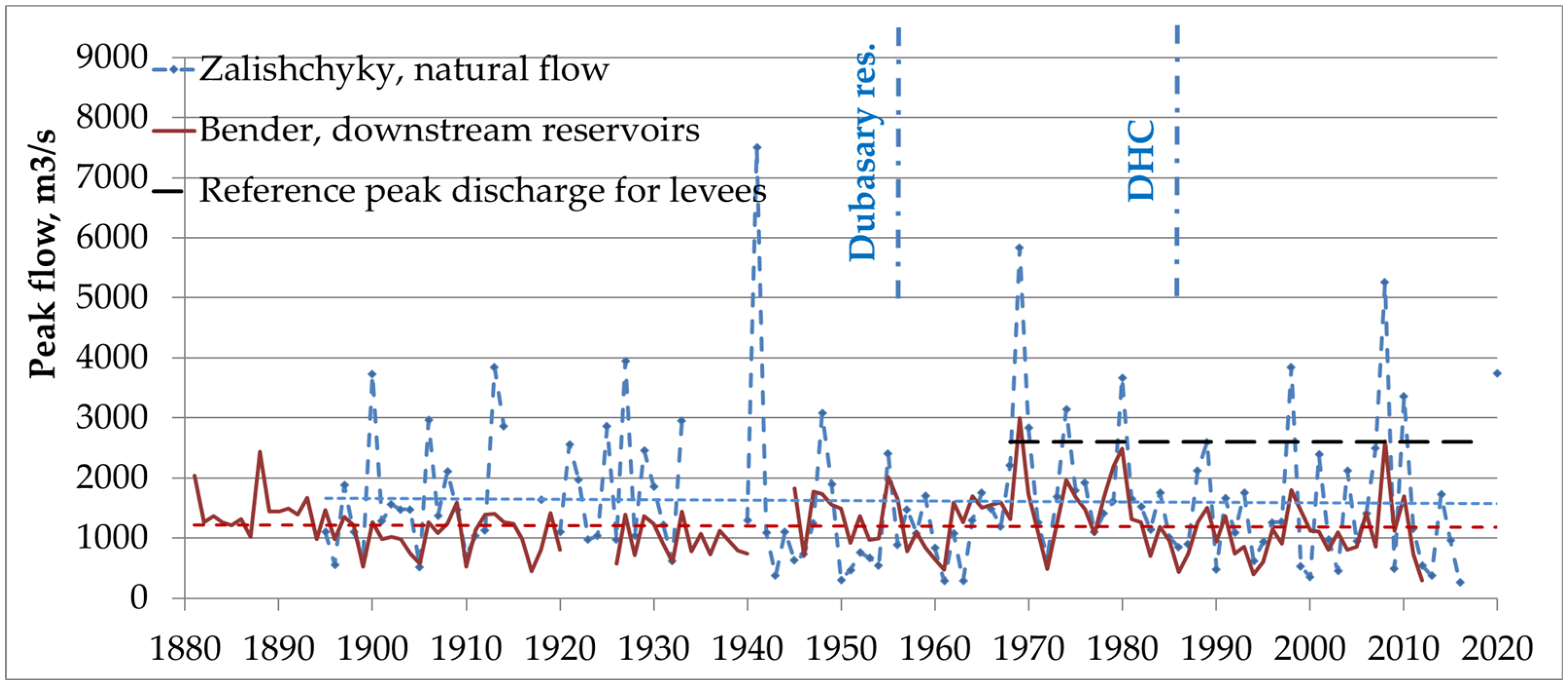

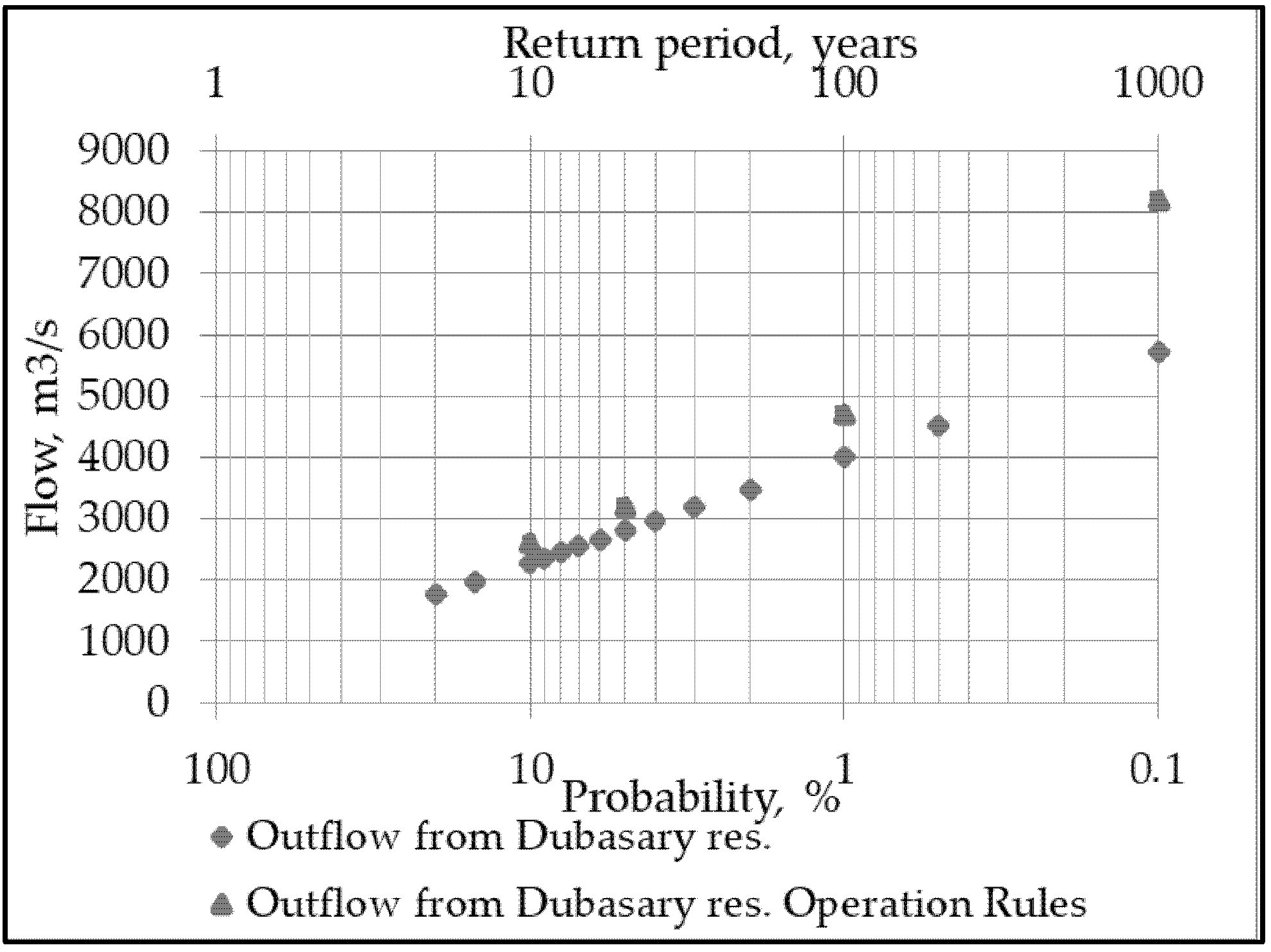
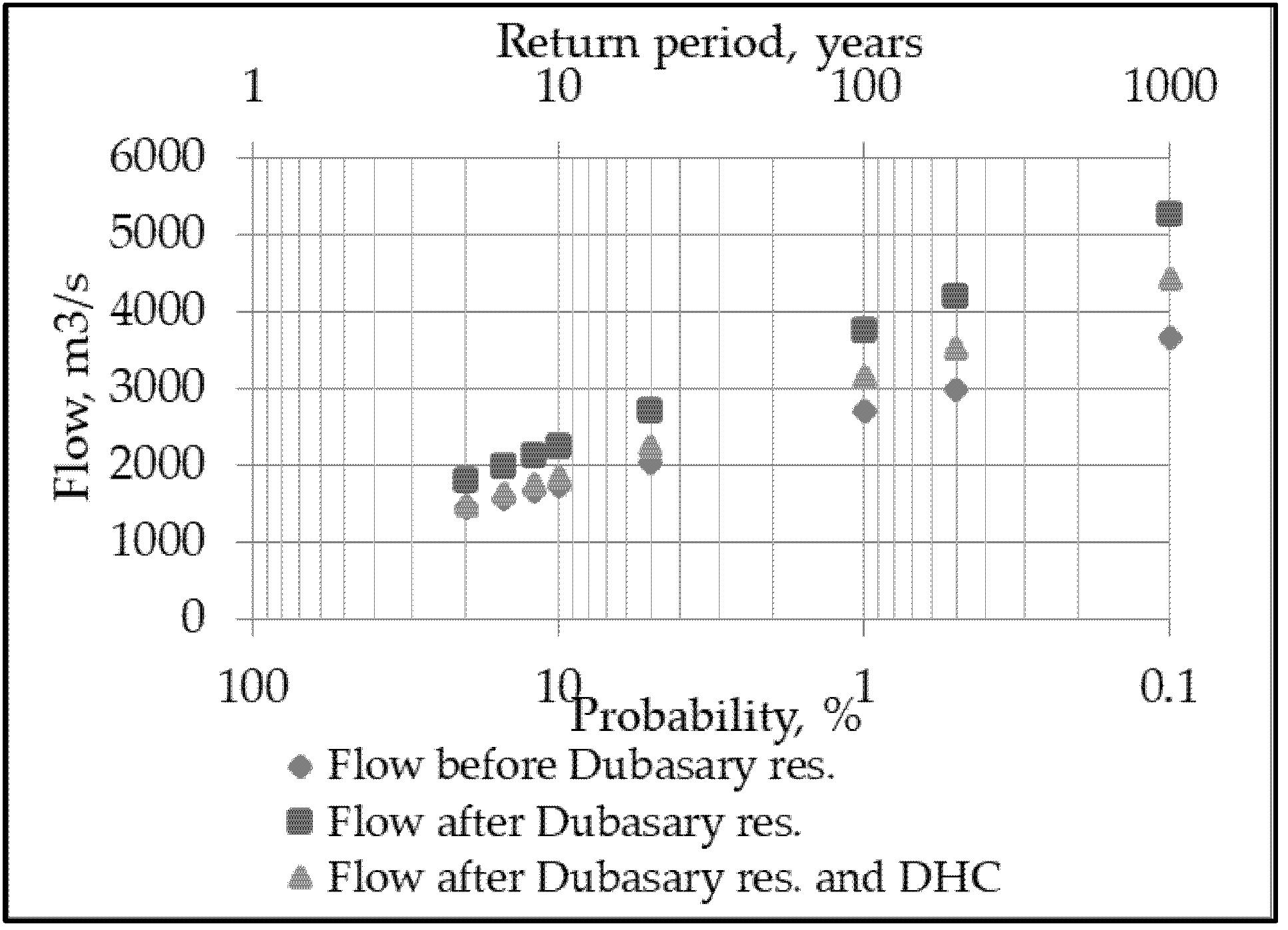
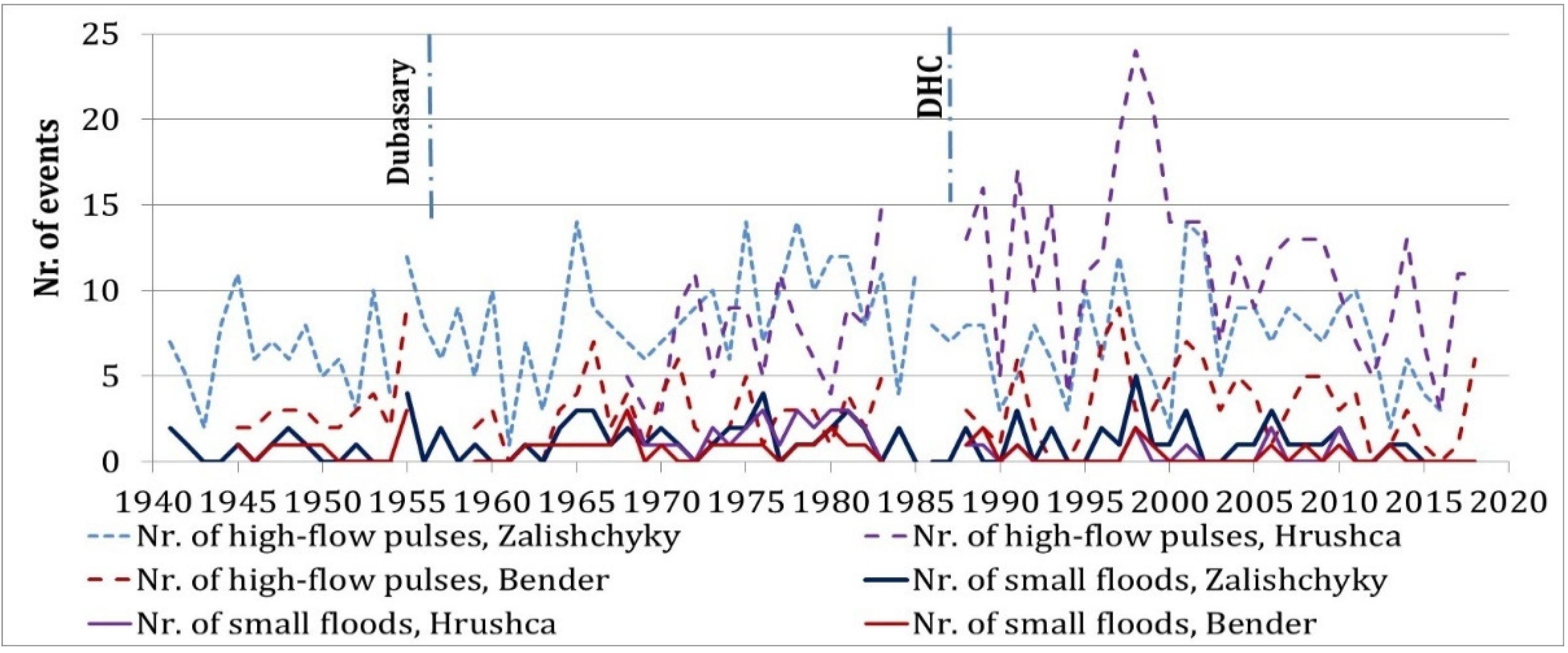
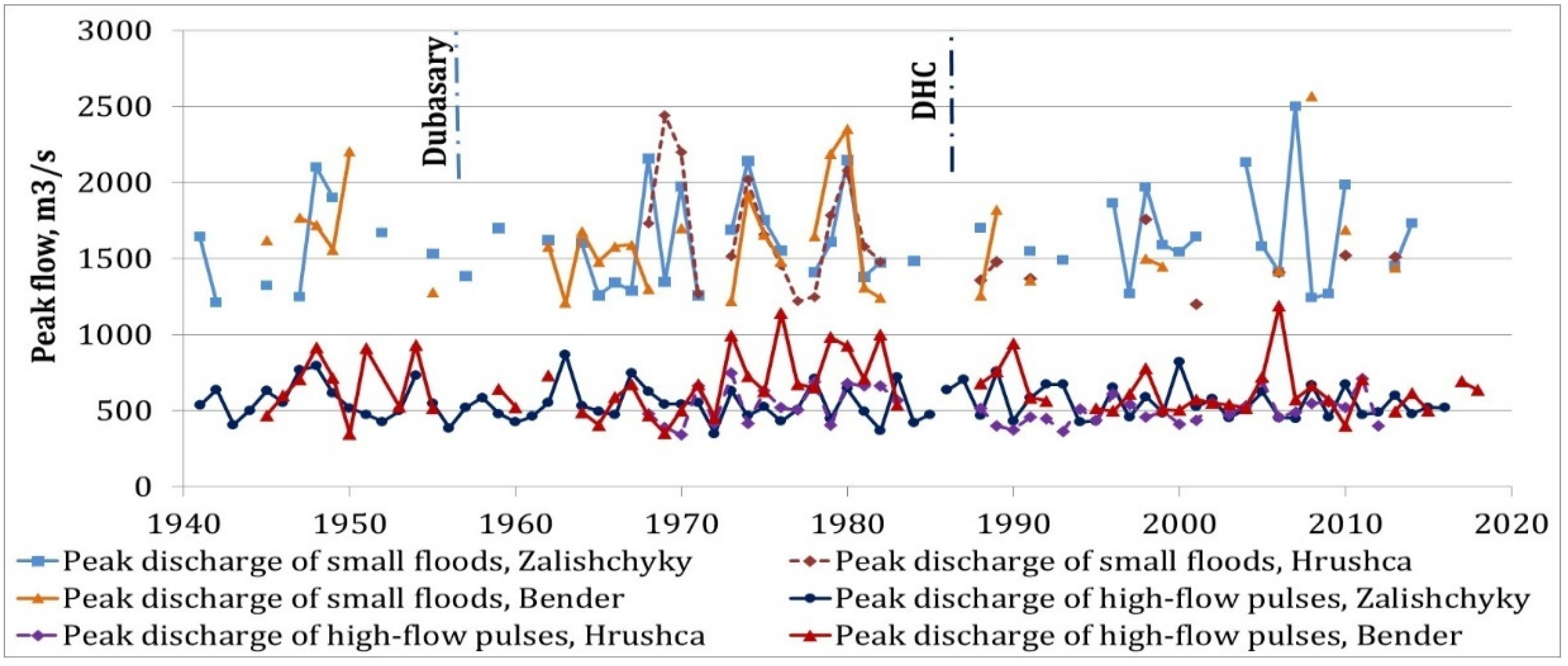
Disclaimer/Publisher’s Note: The statements, opinions and data contained in all publications are solely those of the individual author(s) and contributor(s) and not of MDPI and/or the editor(s). MDPI and/or the editor(s) disclaim responsibility for any injury to people or property resulting from any ideas, methods, instructions or products referred to in the content. |
© 2023 by the author. Licensee MDPI, Basel, Switzerland. This article is an open access article distributed under the terms and conditions of the Creative Commons Attribution (CC BY) license (https://creativecommons.org/licenses/by/4.0/).
Share and Cite
Jeleapov, A. Flood Wave Dynamics in the Transboundary Dniester River Floodplain under Reservoirs Impact. Environ. Sci. Proc. 2023, 25, 92. https://doi.org/10.3390/ECWS-7-14193
Jeleapov A. Flood Wave Dynamics in the Transboundary Dniester River Floodplain under Reservoirs Impact. Environmental Sciences Proceedings. 2023; 25(1):92. https://doi.org/10.3390/ECWS-7-14193
Chicago/Turabian StyleJeleapov, Ana. 2023. "Flood Wave Dynamics in the Transboundary Dniester River Floodplain under Reservoirs Impact" Environmental Sciences Proceedings 25, no. 1: 92. https://doi.org/10.3390/ECWS-7-14193
APA StyleJeleapov, A. (2023). Flood Wave Dynamics in the Transboundary Dniester River Floodplain under Reservoirs Impact. Environmental Sciences Proceedings, 25(1), 92. https://doi.org/10.3390/ECWS-7-14193





